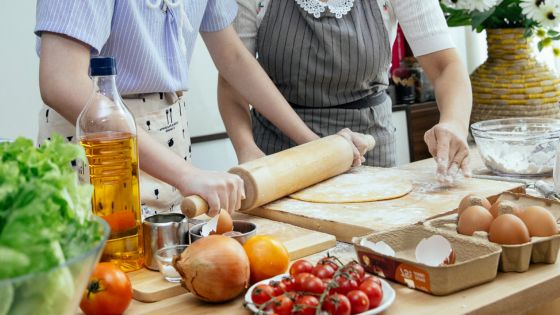There’s nothing quite like the aroma of freshly baked goodies wafting through your home, filling every nook and cranny with warmth and anticipation. Whether you’re a seasoned home baker or just starting your journey into the world of flour and sugar, mastering the art of baking is a rewarding endeavour.


In this article, we’ll explore three essential tips to help you achieve bakery-worthy results in the comfort of your own kitchen.
The Importance of Quality Ingredients
The foundation of any great baked good lies in the quality of its ingredients. So whether you choose premade dough or you start from scratch, when it comes to baking, it’s worth investing in the best you can afford. Start with flour, the backbone of most recipes. Opt for high-quality, unbleached all-purpose flour or experiment with specialty flours like whole wheat or pastry flour for different textures and flavours. Remember, the type of flour you choose can significantly impact the final product.
Next up is butter, a crucial ingredient that adds richness and flavour. Consider using European-style butter with a higher fat content for an extra layer of decadence. When it comes to eggs, choose fresh, organic ones for a better taste and texture in your baked goods. Don’t forget about vanilla extract, pure vanilla extract can make a noticeable difference compared to its artificial counterpart.
Additionally, pay attention to leavening agents. Baking powder and baking soda have expiration dates, and using outdated ones can result in flat and lacklustre treats. Always check the freshness of your leavening agents before adding them to your recipes.
Lastly, when it comes to sweeteners, experiment with different sugars to find your preferred taste. Brown sugar, honey, or maple syrup can add depth and complexity to your baked goods. Remember, using high-quality ingredients may cost a bit more, but the improvement in flavour and texture will be well worth it.
Precision in Measurements and Mixing Techniques
Baking is often described as a science, and precise measurements are key to achieving consistent and delicious results. Whether you’re following a scrumptious vienna bread recipe or a simple sponge cake recipe using accurate measuring cups and spoons for precise measurements and following the instructions meticulously is the key. Baking is not the time for approximations, even a small discrepancy in measurements can alter the outcome.
One common mistake is scooping flour directly from the bag with the measuring cup, which can lead to compacted flour and result in a heavier texture. Instead, spoon the flour into the measuring cup and level it off with a flat edge for an accurate measurement. For wet ingredients, use a liquid measuring cup at eye level to ensure accuracy.
Equally important is understanding the mixing process. Overmixing or undermixing can affect the final texture of your baked goods. When incorporating dry ingredients into wet, mix until just combined to avoid overworking the gluten in the flour, which can lead to toughness. Use a light hand and fold in ingredients gently for tender and airy results.
Investing in a quality stand mixer or hand mixer can make the mixing process more efficient and consistent. However, for certain recipes, such as delicate cakes or muffins, mixing by hand with a spatula may be preferable to avoid overmixing.
Temperature Control and Patience in Baking
Baking is as much about temperature control as it is about ingredient quality and precision in measurements. Preheating your oven is non-negotiable, it ensures that your baked goods start cooking immediately, leading to better rise and texture.
Invest in an oven thermometer to verify the accuracy of your oven’s temperature. Ovens can vary, and a few degrees can make a significant difference in the outcome of your baking. Position your baking pans in the centre of the oven for even heat distribution, and avoid overcrowding the oven to allow for proper air circulation.
Patience is a virtue in baking. Resist the temptation to open the oven door too frequently, as it can cause temperature fluctuations that affect the baking process. Follow the recommended baking times closely, but use visual and sensory cues as well. A toothpick inserted into the centre of a cake should come out clean or with a few moist crumbs, indicating that it’s perfectly baked.
Allow your baked goods to cool completely before slicing or frosting. Rushing this step can lead to a gummy or crumbly texture. Use a wire rack for cooling to ensure proper airflow around your treats.
After more baking tips? Check out this article published on Taste!
Conclusion
By focusing on ingredient quality, precision in measurements and mixing techniques, and temperature control, you can elevate your home baking skills and produce treats that rival those from your favourite bakery.
Experiment with different recipes, take notes on your successes and learnings, and most importantly, savour the joy of creating delicious treats that bring warmth and comfort to those you share them with.
Happy Baking!


























